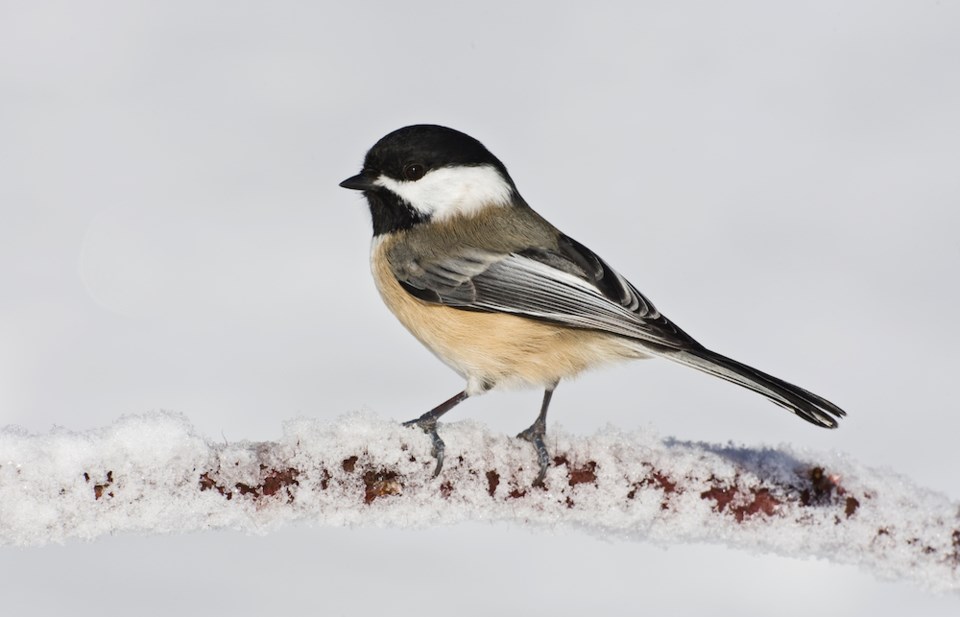The first bird I heard this morning on my property on Redrooffs Road, Halfmoon Bay, was the distinctive ‘’chick-a-dee-dee” song of a black-capped chickadee. This was only the second time I have recorded the species on the property (the first, a week ago). Black-capped chickadees are recent immigrants to the Sunshine Coast, and we have a detailed history of their colonization of our area, based on Christmas Bird Count data.
Chestnut-backed chickadee has always been abundant on the Sunshine Coast, no surprise, given its typically coniferous forest habitat preference. Black-capped chickadees were a common species in Vancouver and as close to our area as Horseshoe Bay. Their preferred habitat is typically deciduous forest, but they do well in urban environments with horticultural trees and shrubs, and also bird feeders. Despite their easy adaptation to urban habitat, black-capped chickadees do have one critical limitation that crimps any range expansion ideas they may have in coastal B.C…they are reluctant to the nth degree to fly over water. The species does not occur on Vancouver Island, despite it being perfect habitat for them.
The first record of a black-capped chickadee on the Sunshine Coast was on Jan. 11, 1994, when Barry Janyk reported a single bird in Gibsons. It was first recorded on the Christmas Bird Count in 1996. For the first few years they were only reported from Port Mellon to Gospel Rock, with Arrowhead Park in Gibsons being the only reliable location to find the species. Given their known antipathy to cross water, we can speculate that the first birds arrived by spreading around Howe Sound from the Squamish area. However, it’s possible they arrived by island-hopping from Horseshoe Bay to Bowen, Keats, and then Gibsons. The species was first recorded in Sechelt after 2000 but remained very scarce. The first Pender Harbour report was in 2008. Black-capped chickadees are now fairly common in the Sechelt area, with the Sechelt Marsh being a reliable location. In Halfmoon Bay, they are regularly reported from Sargeant Bay, but not at my place, three kilometres to the north/west. We shall see if they colonize my area!
Someone asked the other day, where have all the birds gone? It does seem that the birds have deserted us, as we reach mid-July. Fact is, there should be more birds around right now than at any other time of the year, as the population should be boosted by the young of the year. Most species have completed breeding, though young birds can still be seen trailing their parents and begging for food. The apparent absence of birds must surely be accounted for by the cessation of song, with the breeding season over.
To report your sightings or questions contact me at [email protected] or 604-885-5539. Good Birding.



